Related Research Articles

Revolutionary Socialist Party (RSP) is a communist party in India. The party was founded on 19 March 1940 by Tridib Chaudhuri and has its roots in the Bengali liberation movement Anushilan Samiti and the Hindustan Socialist Republican Army.
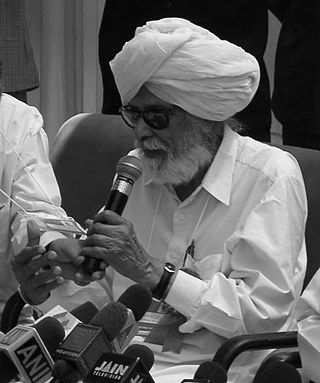
Harkishan Singh Surjeet was an Indian Communist politician from Punjab, who served as the General Secretary of the Communist Party of India (Marxist) from 1992 to 2005 and was a member of the party's Polit Bureau from 1964 to 2008.
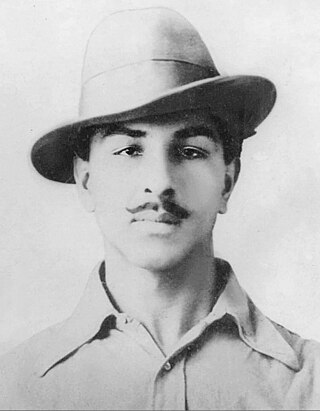
Bhagat Singh was a charismatic Indian revolutionary who participated in the mistaken murder of a junior British police officer in what was to be retaliation for the death of an Indian nationalist. He later took part in a largely symbolic bombing of the Central Legislative Assembly in Delhi and a hunger strike in jail, which—on the back of sympathetic coverage in Indian-owned newspapers—turned him into a household name in the Punjab region, and after his execution at age 23 into a martyr and folk hero in Northern India. Borrowing ideas from Bolshevism and anarchism, he electrified a growing militancy in India in the 1930s, and prompted urgent introspection within the Indian National Congress's nonviolent but eventually successful campaign for India's independence.
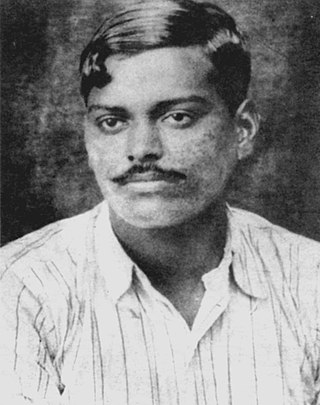
Chandra Shekhar Tiwari , popularly known as Chandra Shekhar Azad, was an Indian revolutionary who reorganised the Hindustan Republican Association (HRA) under its new name of Hindustan Socialist Republican Association (HSRA) after the death of its founder, Ram Prasad Bismil, and three other prominent party leaders, Roshan Singh, Rajendra Nath Lahiri and Ashfaqulla Khan. He hailed from Bardarka village in Unnao district of United Provinces and his parents were Sitaram Tiwari and Jagrani Devi. He often used the pseudonym "Balraj" while signing pamphlets issued as the commander-in-chief of the HSRA.

Sukhdev Thapar was an Indian revolutionary who fought against the British government for the freedom of India. He was a member of the Hindustan Socialist Republican Association (HSRA). He was executed along with Shivaram Rajguru and Bhagat Singh on 23 March 1931.
The Revolutionary movement for Indian Independence was part of the Indian independence movement comprising the actions of violent underground revolutionary factions. Groups believing in armed revolution against the ruling British fall into this category, as opposed to the generally peaceful civil disobedience movement spearheaded by Mahatma Gandhi.
Hindustan Socialist Republican Association (HSRA), previously known as the Hindustan Republican Army and Hindustan Republican Association (HRA), was a radical left-wing Indian revolutionary organisation founded by Ram Prasad Bismil, Ashfaqulla Khan, Sachindra Nath Bakshi, Sachindranath Sanyal and Jogesh Chandra Chatterjee. HRA's manifesto titled The Revolutionary and written constitution were produced as evidence in the Kakori conspiracy case of 1925.

Ashfaqulla Khan was an Indian independence activist in the Indian independence movement against British rule and co-founder of the Hindustan Republican Association.

Yogendra Shukla was an Indian nationalist and freedom fighter from Bihar. He served in the Cellular Jail, and he was among the founders of Hindustan Socialist Republican Association (HSRA). Along with Basawon Singh (Sinha), he was among the founding members of the Congress Socialist Party from Bihar.
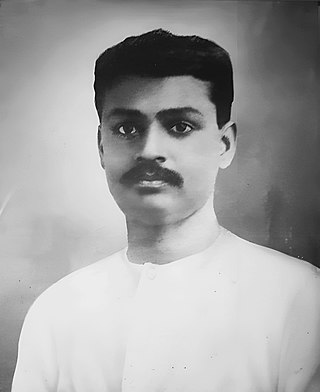
Sachindra Nath Sanyal was an Indian revolutionary and co-founder of the Hindustan Republican Army that was created to carry out armed resistance against the British Empire in India. He was a mentor for revolutionaries like Chandra Shekhar Azad, Jatindra Nath Das, and Bhagat Singh.
The Workers and Peasants Party (WPP) (also known as the Kirti Kisan Party) was a political party in India, which worked inside the Indian National Congress in 1925–1929. It became an important front organisation for the Communist Party of India and an influential force in the Bombay labour movement. The party was able to muster some success in making alliances with other left elements inside the Congress Party, amongst them Jawaharlal Nehru. However, as the Communist International entered its 'Third Period' phase, the communists deserted the WPP project. The WPP was wound up, as its leadership was arrested by the British authorities in March 1929.
Pandit Kishori Lal was a communist Indian revolutionary from Punjab who worked with Sukhdev Thapar and the Hindustan Socialist Republican Association (HSRA).
Kirti was a Punjabi monthly started by the veteran Ghadarite Santokh Singh in February 1926. It was purely a communist production, subsidized by the Ghadar Party in the United States. Within a few months, Sohan Singh Josh took over as the editor. In 1928, the Communist Party of India tied-Kirti group was formed, Kirti became its mouthpiece. Its purpose was to outline the basic ideas of revolution and Marxist ideals.
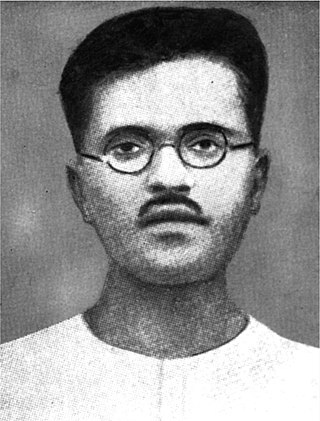
Bhagwati Charan Vohra was an Indian revolutionary, associated with Hindustan Socialist Republican Association. He was an ideologue, organiser, orator and campaigner.
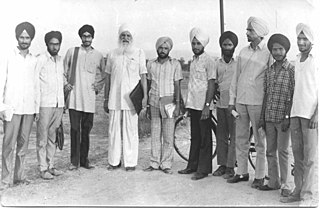
Sohan Singh Josh (1898–1982) was an Indian communist activist and freedom fighter.
Mukundi Lal was an Indian Revolutionary Freedom Fighter and an active member of Hindustan Socialist Republican Association (HSRA).
Baldev Mann was a left-wing activist of the Communist Party of India (Marxist–Leninist) New Democracy. He was a state level leader of Kirti Kisan Union and the editor of Hirawal Dasta a revolutionary journal of the Naxalites. On 26 September 1986 he was killed by terrorists while on his way to his village, Bagga Kalan, in Amritsar district of Punjab. Her daughter is Sonia Mann.
Hans Raj Vohra was an approver for British in HSRA, providing testimony for the British that identified his associates in return for his own freedom. In May 1930, his statement against Bhagat Singh, Sukhdev Thapar and Shivaram Rajguru, in the Lahore Conspiracy Case trial, became "crucial" in leading to passing of their death sentence.
Communists were actively involved in Indian independence movement through multiple series of protests, strikes and other activities. It was a part of revolutionary movement for Indian independence. Their main thrust was on organising peasants and working classes across India against the British and Indian capitalists and landlords.
References
Citations
- ↑ Gupta (1997)
- ↑ Mittal & Habib (1979)
- ↑ Singh (2008), p. 236
- ↑ https://lohiatoday.files.wordpress.com/2018/09/shysl.pdf [ bare URL PDF ]
- 1 2 Nair (2009)
- ↑ Mukherjee (2004), pp. 45, 115–119
Bibliography
- Gupta, Amit Kumar (September–October 1997), "Defying Death: Nationalist Revolutionism in India, 1897–1938", Social Scientist, 25 (9/10): 3–27, doi:10.2307/3517678, JSTOR 3517678
- Mittal, S. K.; Habib, Irfan (1979), "Towards Independence and Socialist Republic: Naujawan Bharat Sabha: Part One", Social Scientist, 8 (2): 18–29, doi:10.2307/3516698, JSTOR 3516698
- Mukherjee, Mridula (2004), Peasants in India's Non-Violent Revolution: Practice and Theory, SAGE Publications India, ISBN 978-8-13210-289-2
- Nair, Neeti (May 2009), "Bhagat Singh as 'Satyagrahi': The Limits to Non-violence in Late Colonial India", Modern Asian Studies, Cambridge University Press, 43 (3): 649–681, doi:10.1017/s0026749x08003491, JSTOR 20488099, S2CID 143725577
- Singh, Ujjwal Kumar (2008), "Penal Strategies and Resistance in Colonial and Independent India", in Kannabiran, Kalpana; Singh, Ranbir (eds.), Challenging The Rules(s) of Law: Colonialism, Criminology and Human Rights in India, SAGE Publications, ISBN 978-8-13210-027-0